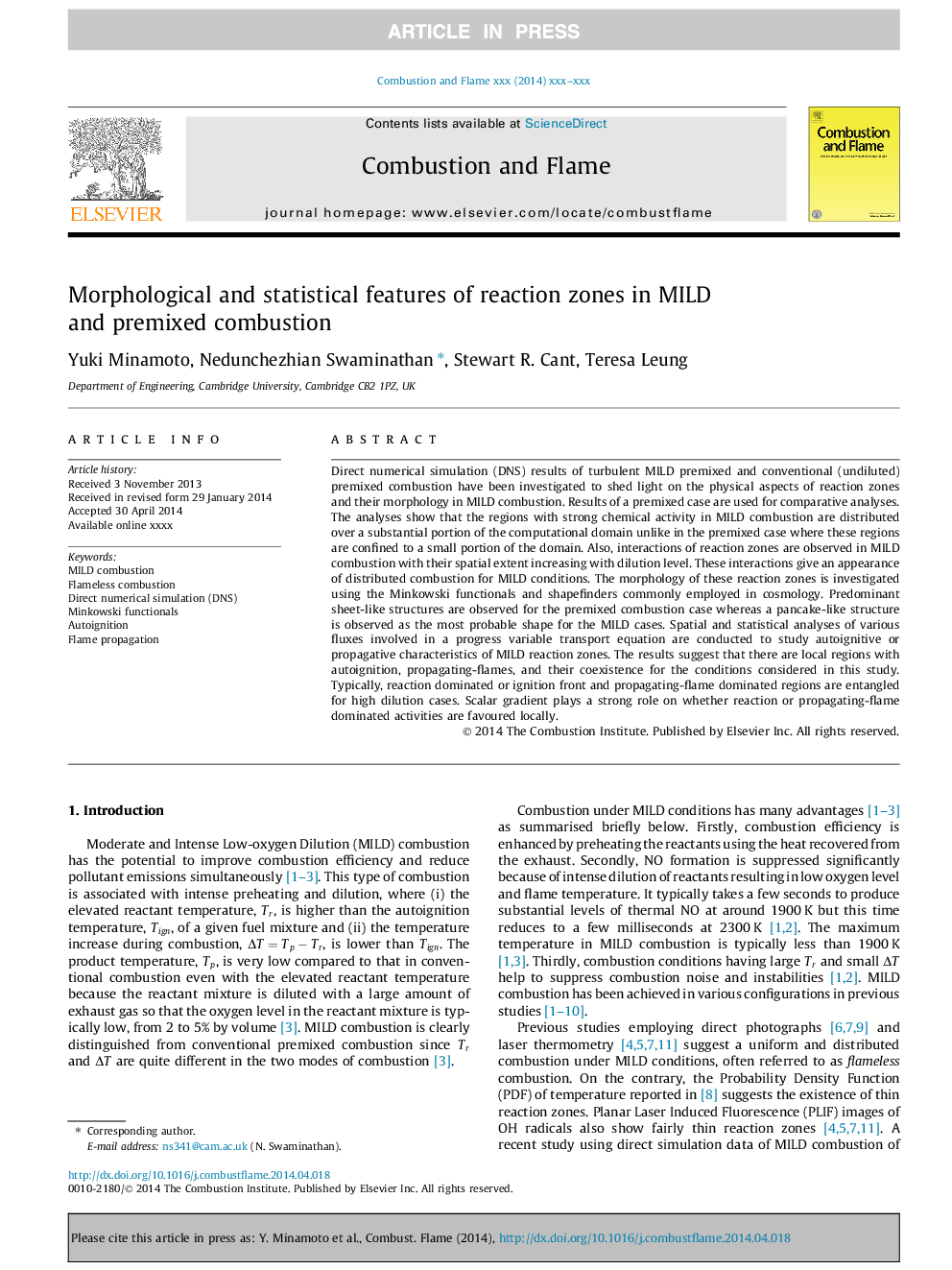| Article ID | Journal | Published Year | Pages | File Type |
|---|---|---|---|---|
| 10264334 | Combustion and Flame | 2014 | 14 Pages |
Abstract
Direct numerical simulation (DNS) results of turbulent MILD premixed and conventional (undiluted) premixed combustion have been investigated to shed light on the physical aspects of reaction zones and their morphology in MILD combustion. Results of a premixed case are used for comparative analyses. The analyses show that the regions with strong chemical activity in MILD combustion are distributed over a substantial portion of the computational domain unlike in the premixed case where these regions are confined to a small portion of the domain. Also, interactions of reaction zones are observed in MILD combustion with their spatial extent increasing with dilution level. These interactions give an appearance of distributed combustion for MILD conditions. The morphology of these reaction zones is investigated using the Minkowski functionals and shapefinders commonly employed in cosmology. Predominant sheet-like structures are observed for the premixed combustion case whereas a pancake-like structure is observed as the most probable shape for the MILD cases. Spatial and statistical analyses of various fluxes involved in a progress variable transport equation are conducted to study autoignitive or propagative characteristics of MILD reaction zones. The results suggest that there are local regions with autoignition, propagating-flames, and their coexistence for the conditions considered in this study. Typically, reaction dominated or ignition front and propagating-flame dominated regions are entangled for high dilution cases. Scalar gradient plays a strong role on whether reaction or propagating-flame dominated activities are favoured locally.
Keywords
Related Topics
Physical Sciences and Engineering
Chemical Engineering
Chemical Engineering (General)
Authors
Yuki Minamoto, Nedunchezhian Swaminathan, Stewart R. Cant, Teresa Leung,
